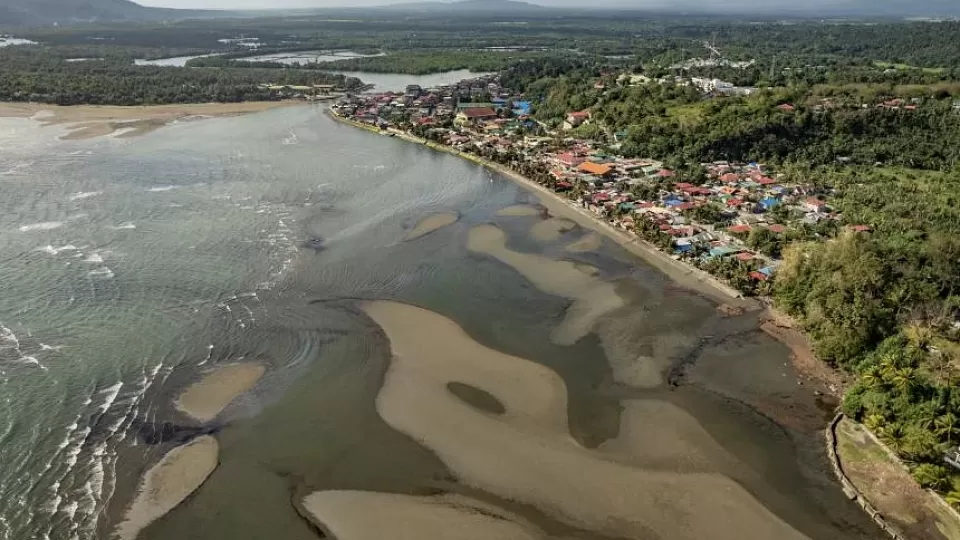March 13, 2023
MANILA – The sinking of an oil tanker off the coast of Oriental Mindoro on Feb. 28 has a tremendous impact on the environment, economy, and people’s health that will be felt for many years, even decades. It has also once more brought to light the importance of protecting the Philippines’ vast marine resources by revisiting laws and passing new regulations, as well as improving capability of responding to and containing disasters like this given the country’s archipelagic features.
Authorities will now have to answer why it took a week before an oil spill boom was placed around the possible location of MT Princess Empress to help contain the leak from the sunken tanker. The vessel was said to have sunk at least 1,200 feet or 400 meters below sea level, bringing down with it 800,000 liters of industrial oil. By the time the boom was placed last Wednesday, thousands of liters of oil have spilled into the ocean and reached the surrounding coastlines sending at least nine towns into a state of calamity, impacting the livelihood of fishermen, affecting the health of residents, and threatening the area’s rich marine biodiversity. News reports showed volunteers scrambling to clean up the oil slick from the beaches of the island, a popular tourist destination, while many residents have fallen ill due to the worsening stench as days stretched to over a week now and still no sign that the leakage has been contained.
ADVERTISEMENT
Oil spills, per this paper’s special report published on March 7, are a common occurrence, especially for a country whose waterways serve as channels for transportation and commerce.
An incident that happened in Guimaras in 2006 propelled the government to review oil spill contingency arrangements and revise the National Oil Spill Contingency Plan (NOSCP) that was promulgated in 2008. The NOSCP provides response arrangements, depending on the tier of the spill, on which party should undertake the clean-up and other contingency measures with the Philippine Coast Guard as the lead responsible agency and the Marine Environmental Protection Command as the point of contact. This structure is clear enough, so why were there bottlenecks in the response operation in Mindoro, including transmitting crucial information to the affected communities? On top of the NOSCP, Republic Act No. 9483 was enacted in 2007 to establish the oil pollution management fund in anticipation of incidents similar to the Guimaras oil spill. But this law, based on reports, still lacks implementing rules and regulations — 16 years after it was signed.
The 2006 Guimaras incident affected 1,500 hectares of the local ecosystem comprised of mangroves, seagrass, and coral reefs, and is considered one of the worst environmental disasters to hit the country. The sunken oil tanker spilled more than 2.1 million liters of bunker fuel, and it took years to rehabilitate the island, which lost billions of revenues in the process. That incident should have served as a precaution, but many other disastrous oil spill incidents have happened since (e.g., in Cordova, Cebu, in 2013; and again in Guimaras, in 2020) and unless the government acts to protect its crucial marine areas, the latest in Mindoro will not be the last.
The Mindoro oil spill occurred in the Verde Island Passage (VIP) marine corridor, where the South China Sea and Pacific Ocean waters converge. The VIP is one of the most important marine ecosystems in the world and is said to host about 60 percent of the world’s known shorefish species. The passage provides livelihood and food resources to over 2 million people and serves as a shipping route to international ports in Batangas, Manila, and Subic Bay.
Calls have long been made to make VIP a World Heritage site to ensure that its rich underwater resources are protected. At least one measure, Senate Bill No. 518 filed last year, seeks to declare VIP a protected area under RA 7586 or the National Integrated Protected Areas System Act of 1992 given the threats, particularly navigation, to its biodiversity. The oil spill should prompt the government to take serious steps to protect this vital passage.
A disaster of this magnitude goes beyond containment and — long after all the oil has been skimmed and cleaned up — recovery, rehabilitation, and reconstruction will be a long, arduous process. In previous oil spills, affected communities faced not only the loss of their livelihood but also continuous threats against their health, from the safety of the water they drink to the fish sold in the markets. Helping them survive and get back on their feet should be the responsibility and priority not only of the government but of the owner of MT Princess Empress.
The extent of the damage in Mindoro has yet to be fully determined, but this should not only prompt authorities to revisit the laws but to tighten already-existing mechanisms to ensure accountability and enforce preventive measures. And this should be followed through, not as mere lip service, and only revisited when another oil spill incident takes place.


